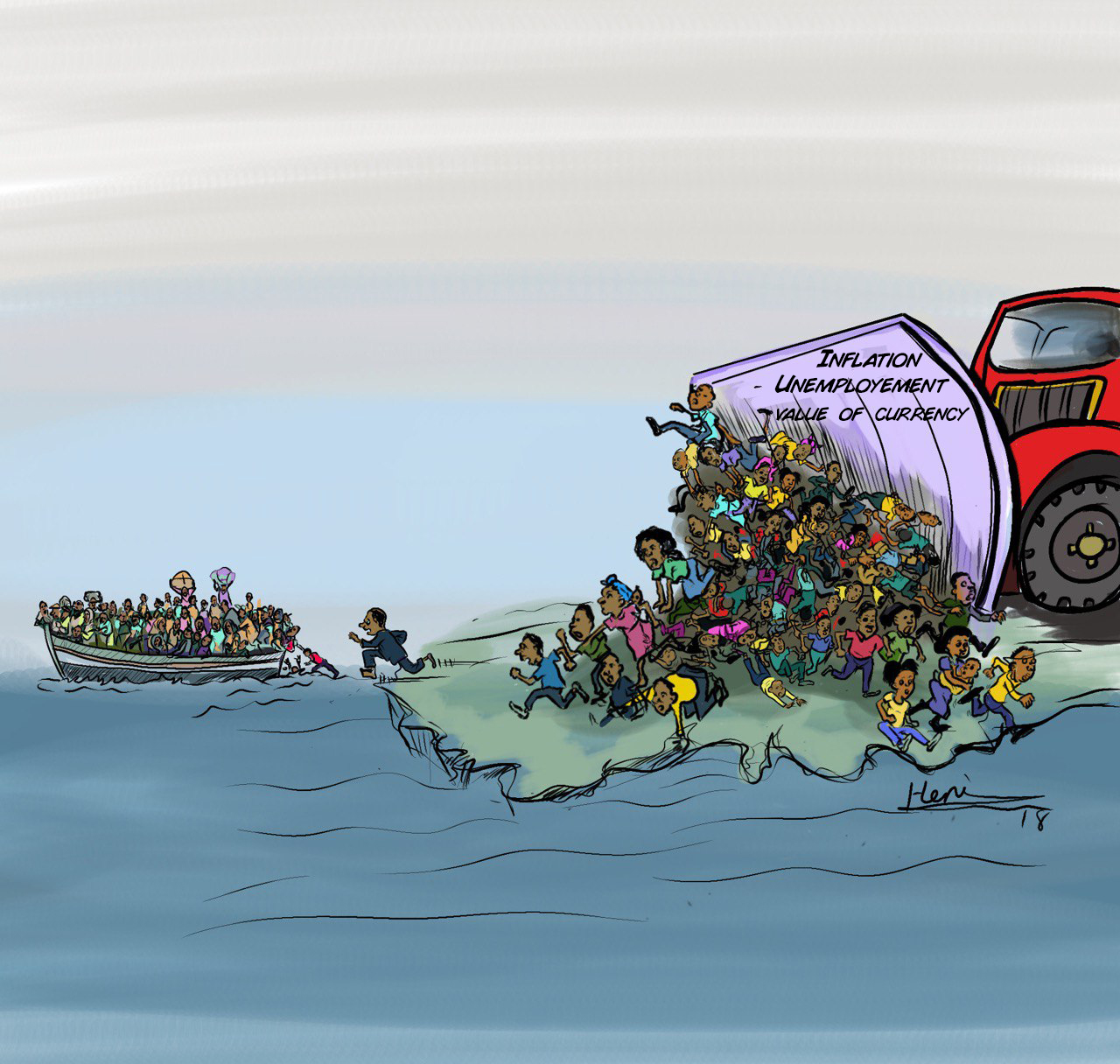Takele Uma (right), minister of Mines, gave a tour of the Ethiopian Mineral Gallery, inaugurated last June, to showcase the potential and ambition to develop the mineral industry. It was a side ritual to a fossil fuel minerals certification event his Ministry held in the presence of guests such as Birtukan Ayano (second from left), a state minister for Foreign Affairs, and Fiona Addis (right), US deputy chief of mission.
Netherland Sewell & Associates, an energy consulting firm based in the United States, conducted natural gas reserve assessments in the Ogaden Basin of the Somali Regional State. Last Friday, the firm handed over certification that the volume of reserves stood at seven trillion cubic feet. The assessment took a few months to complete and was supported by data gathered over the last decades on seismic activity, well logs and pressure-volume-temperature (PVT) analysis. The certification report helps secure financing for hydrocarbon projects and documents Ethiopia’s potential to meet its domestic gas and oil needs, according to Joseph Wolfe, vice president of the firm.
“This is just a piece of paper,” Wolfe said, emphasising the long-term commitment, capital and infrastructure required to build a fossil fuel industry. “Now the hard work begins.”
The natural gas potential of the Ogaden basin has long been touted. Still, the proven amount is not significant relative to countries such as Russia, Iran and the United States, or even Egypt and Tanzania, the latter of which has a project in the works with an oil major. Although not a single drop of liquified natural gas (LNG) or oil has been extracted in Ethiopia, exploration projects have been a source of conflict. The most deadly, in 2007, led to the deaths of dozens of Ethiopian and Chinese nationals in Abole of the Somali Regional State. If the government intends to develop the energy potential in the region, it will be a race against time. McKinsey & Company, a management consulting firm, estimates fossil fuel demand will peak in 2030, while renewables, such as hydropower, solar and wind, will triple by 2050.
PUBLISHED ON
Aug 27,2022 [ VOL
23 , NO
1165]

Dec 22 , 2024 . By TIZITA SHEWAFERAW
Charged with transforming colossal state-owned enterprises into modern and competitiv...

Aug 18 , 2024 . By AKSAH ITALO
Although predictable Yonas Zerihun's job in the ride-hailing service is not immune to...

Jul 28 , 2024 . By TIZITA SHEWAFERAW
Unhabitual, perhaps too many, Samuel Gebreyohannes, 38, used to occasionally enjoy a couple of beers at breakfast. However, he recently swit...

Jul 13 , 2024 . By AKSAH ITALO
Investors who rely on tractors, trucks, and field vehicles for commuting, transporting commodities, and f...

Nov 1 , 2025
The National Bank of Ethiopia (NBE) issued a statement two weeks ago that appeared to...

Oct 25 , 2025
The regulatory machinery is on overdrive. In only two years, no fewer than 35 new pro...

Oct 18 , 2025
The political establishment, notably the ruling party and its top brass, has become p...

Oct 11 , 2025
Ladislas Farago, a roving Associated Press (AP) correspondent, arrived in Ethiopia in...